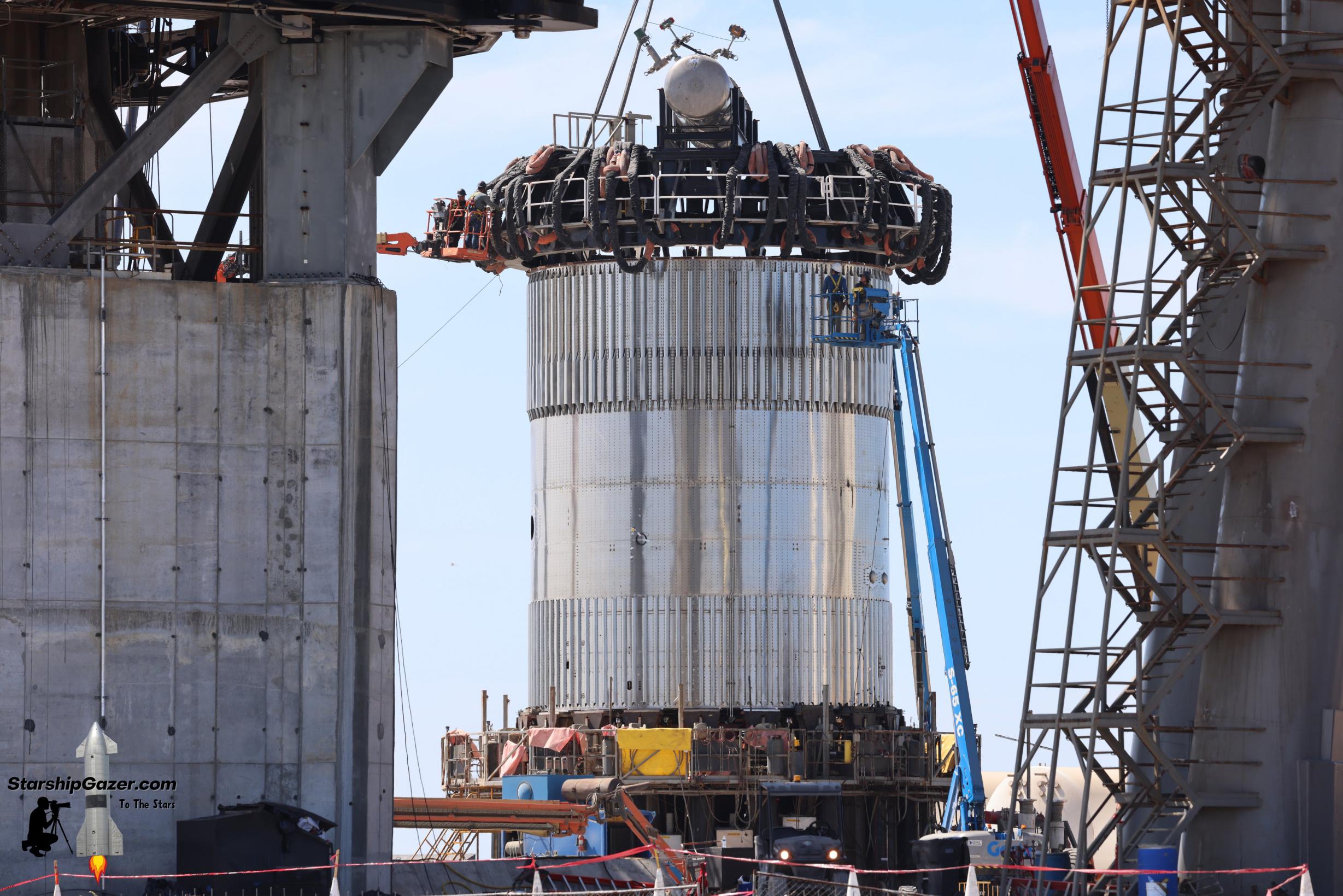

News
SpaceX to attempt to crush Starship test tank
A week after rolling a different ‘test tank’ from its South Texas Starship factory to nearby launch and test facilities, SpaceX has moved a second test tank to the pad.
Hearkening back to a period in 2020 where SpaceX built and tested six different Starship test tanks in a period of six months, the company appears to be preparing to test another batch of tanks in the hopes of qualifying Super Heavy booster design changes and clearing the way for a significant upgrade to all Starship tank domes. The sequencing of the latest tank raises some questions, however.
Known unofficially as the “EDOME” tank in reference to a cryptic label on the side of one of its halves, the first new test tank’s purpose is much more cut and dry. While its steel rings appear to be unchanged from current Starship and Super Heavy prototypes, the tank’s two domes share almost nothing in common with the dozens of domes SpaceX has built and tested over the last three years of development. The new domes are much simpler and should be easier to manufacture than the domes SpaceX is familiar with. Thanks to their more spherical shape, they should also be more efficient, allowing future Starship tanks to store a bit more propellant while taking up the same amount of vertical space. SpaceX has yet to begin testing the EDOME tank since its June 8th rollout and does not appear to be much closer to starting 12 days later.
On June 16th, SpaceX rolled a second test tank to the launch site, which eventually joined the EDOME tank at a staging area that used to be a Starship landing pad. Whereas the EDOME tank is more of a generic test article, the second tank – known as B7.1 – is specifically designed to test Super Heavy booster design changes.
B7.1 is a bit like a miniature Super Heavy. Its three-ring top section is mostly similar to the top section of a booster and is reinforced with dozens of external stringers. Oddly, it is missing cutouts for grid fins, and the tank’s forward dome does not have the reaction frame those hypothetical grid fins would anchor to. On the tank’s bottom half, the same stringers are present, and the tank features a new design that squeezes four slightly shorter rings into the same height as three. The Super Heavy thrust dome those rings enclose is also a new design that expands the number of central Raptor engines from 9 to 13.
It’s unsurprising that SpaceX wants to test those significant design changes. SpaceX did technically conduct a similar test in mid-2021 with a test tank known as BN2.1, but that tank featured a thrust dome with room for 9 older Raptors that would have generated about ~1700 tons of thrust. B7.1’s testing will go a step further than BN2.1 and use a structural test stand that should allow SpaceX to simulate the compressive forces Super Heavy boosters might experience in flight, adding another dimension of stress on top of the 13 hydraulic rams that will simultaneously subject the test tank to the equivalent of ~3000 tons (~6.6M lbf) of thrust.
And lift over to the crusher for a nice bit of torture. pic.twitter.com/SxV3BTs7ry— Chris Bergin – NSF (@NASASpaceflight) June 19, 2022
What is surprising, however, is the fact that SpaceX has waited so long to build and test a tank like B7.1. SpaceX has already completed an entire Super Heavy booster (B7) with all the design changes B7.1 is meant will test and recently installed 33 new Raptor 2 engines on that prototype. A second upgraded booster, B8, is also nearly finished. In that sense, B7.1 is quite unusual and feels more like a reluctant afterthought than part of a methodical development process. If B7.1 suffers an unintentional failure during testing, SpaceX could be forced to abandon two nearly-finished Super Heavy boosters, wasting months of assembly and testing and rendering prototypes that are likely worth tens of millions of dollars all but useless.
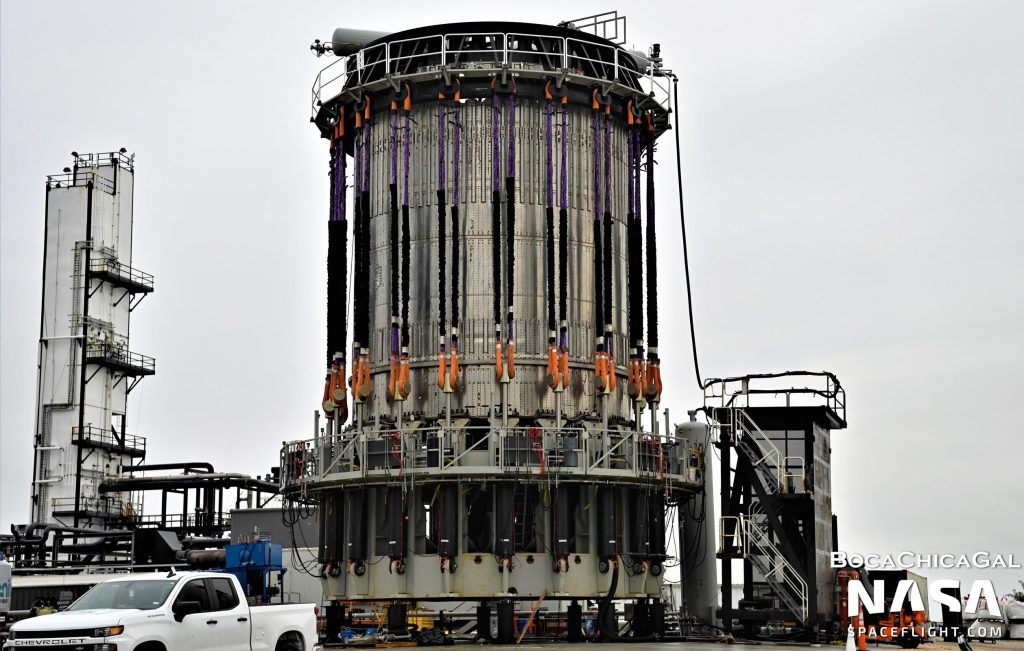
The design changes B7.1 is meant to test are not exactly radical, but it’s still unclear why SpaceX has chosen to conduct those tests after building two entire Super Heavy boosters. Earlier on in Starship development, SpaceX regularly used test tanks to qualify significant design changes before applying those changes to full prototypes, limiting the amount of resources that could be wasted on any unproven prototype. Thankfully, Super Heavy Booster 7 may have already completed similar Raptor thrust simulation tests on the same test stand B7.1 was recently installed on, meaning that SpaceX’s confidence may have been well-placed. However, if the first use of the ‘can crusher’ stand on a Super Heavy test tank finds any problems or ends in failure, B7 and B8 could still be easily rendered unusable or incapable of flight, significantly delaying Starship’s first orbital launch attempt.
Lately, SpaceX has been focused on preparing Starship S24 and Super Heavy B7 for static fire tests that could eventually qualify the pair to support the first orbital test flight. It’s not clear if or when SpaceX will be able to set aside time and evacuate Starbase’s busy orbital launch site to test B7.1 or the EDOME tank.
Elon Musk
Elon Musk confirms Grok 4 launch on July 9 with livestream event
The rollout will be accompanied by a livestream at 8 p.m. Pacific Time.
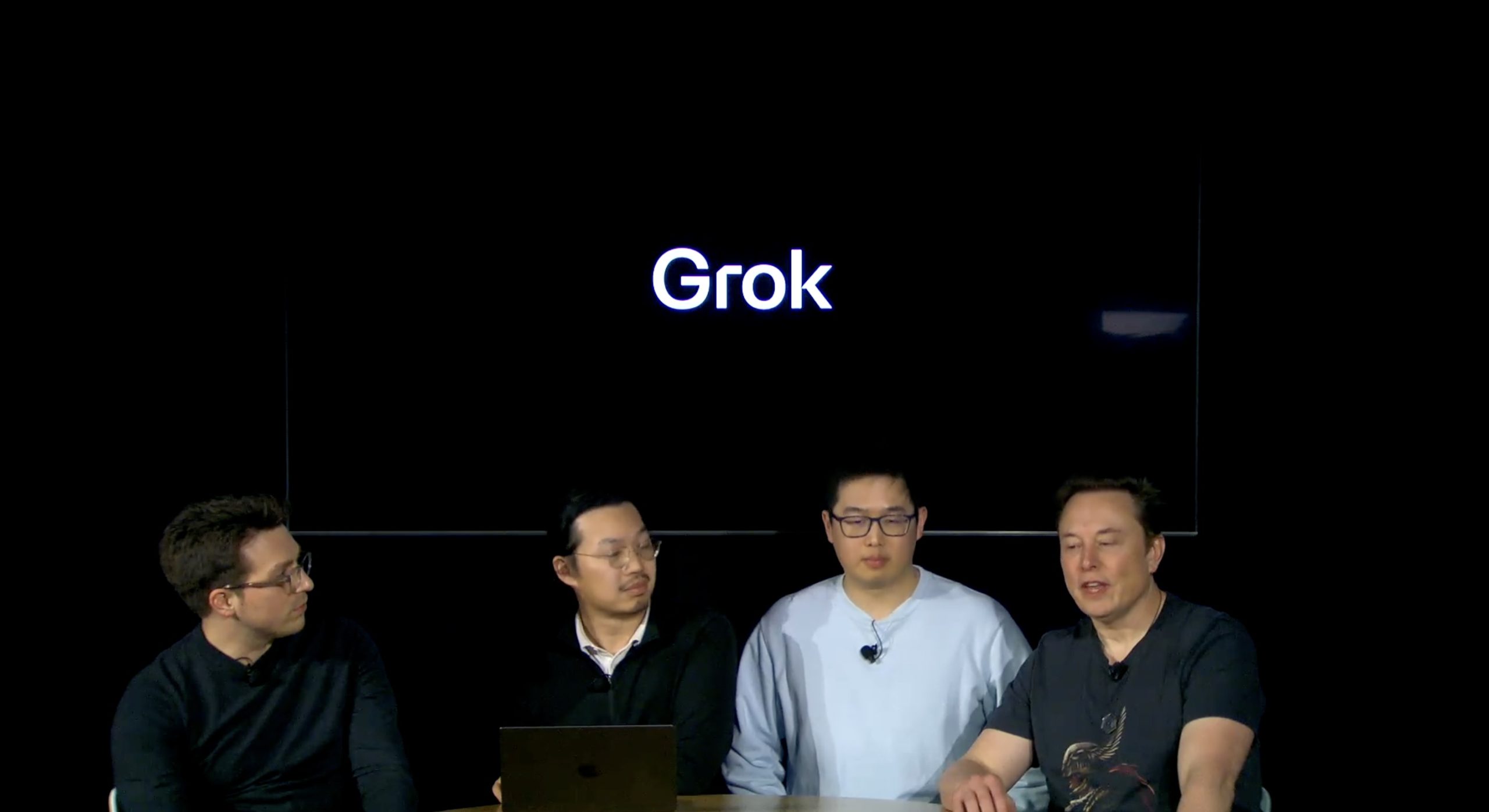
Elon Musk has officially confirmed that Grok 4, the latest version of xAI’s large language model, will launch on July 9. The rollout will be accompanied by a livestream at 8 p.m. Pacific Time, hosted on xAI’s official account on X.
xAI goes straight to Grok 4
Back in May, leaks indicated that xAI was getting ready to ship Grok 3.5. Considering Musk’s recent comments, however, it appears that the artificial intelligence startup would be focusing on the large language model’s fourth iteration instead. As noted in a Financial Express report, users on X have sighted references to Grok 4 in the lead up to the update’s launch, such as “grok-4-prod-mimic” and “Grok 4 Code.”
Musk’s Grok 4 announcement comes as AI competition intensifies between major players including OpenAI, Google, and xAI. With Musk’s Colossus supercomputer fully operational in Memphis, xAI appears to be accelerating its AI product roadmap.
Musk pushes Grok toward political neutrality
Grok 4’s launch also follows a recent controversy involving political bias, as noted in a CNN report. Last week, Grok responded to a user on X stating that political violence in the U.S. since 2016 had come more from the political right than the left. The chatbot noted in a later reply that its answer was based on information from sources like Reuters, the Journal of Democracy, and University of Maryland studies.
Musk stated that Grok’s response was a “major fail.” “Major fail, as this is objectively false. Grok is parroting legacy media. Working on it,” he wrote in a post on X. By the end of June, Musk noted that he was “grinding all night with the xAI team” and that they were making “good progress.” He also stated that the model “Will be called Grok 4. Release just after July 4th. Needs one more big run for a specialized coding model.”
News
Tesla opens massive solar Supercharger station in California
The Supercharger opened to customers ahead of Fourth of July weekend, while Tesla continues phase two of construction on the site.
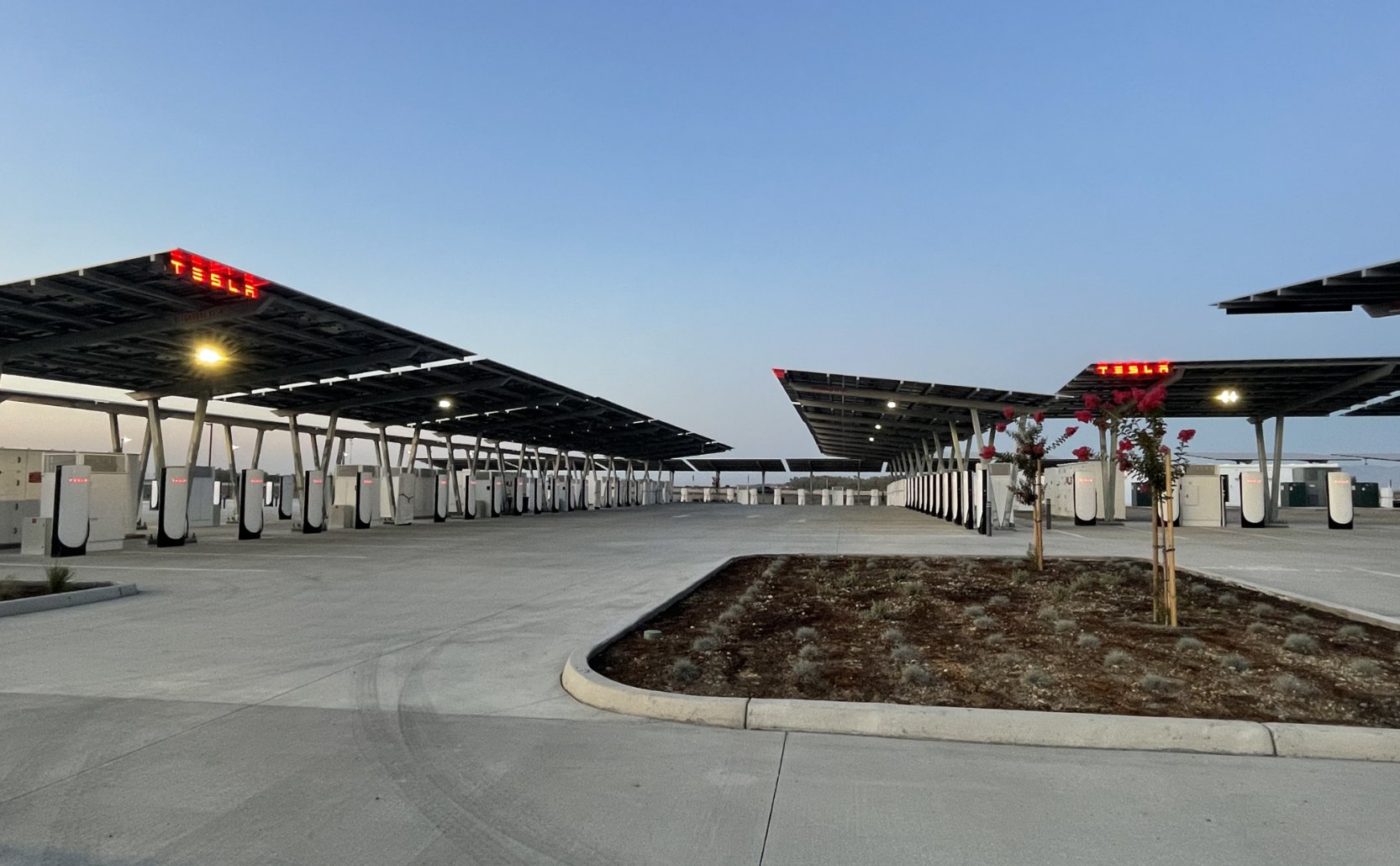
Tesla has officially launched the first several Supercharging posts at a massive station in California, notably including solar canopies and grid-scale batteries to offer completely renewable charging.
Last week, Tesla announced on X that it opened the first 84 Supercharger stalls of a planned 168-stall station in Lost Hills, California. Additionally, the massive Supercharger project features 11MW of solar canopies and 10 Megapack batteries for off-grid charging powered entirely by solar energy.
Tesla completed the first phase of the project just days ahead of the busy Fourth of July holiday weekend, adding that initial construction took just eight months. In addition to the remaining charging stalls, Tesla says it’s building a set of lounge areas, renderings of which can be seen below alongside current photos of the site.
Notably, the site also includes V4 charging posts for the company’s latest available charging speeds, and it’s located near the busy junction between I-5 and Highway 46 in Kern County.
“Thank you [Kern County] and [PG&E] for collaboration and approvals,” Tesla wrote in a follow-up post.
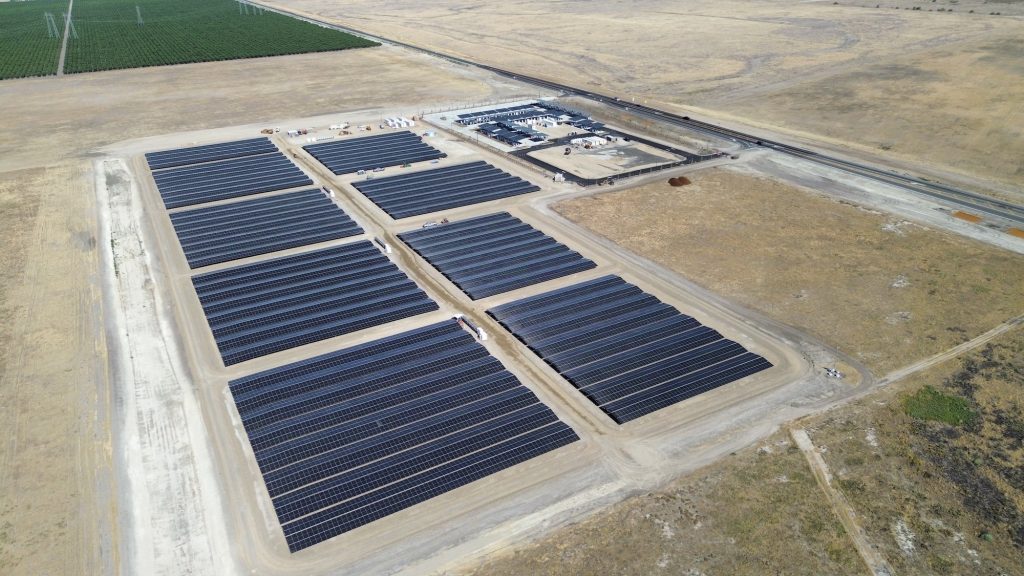
Credit: Tesla Charging | X
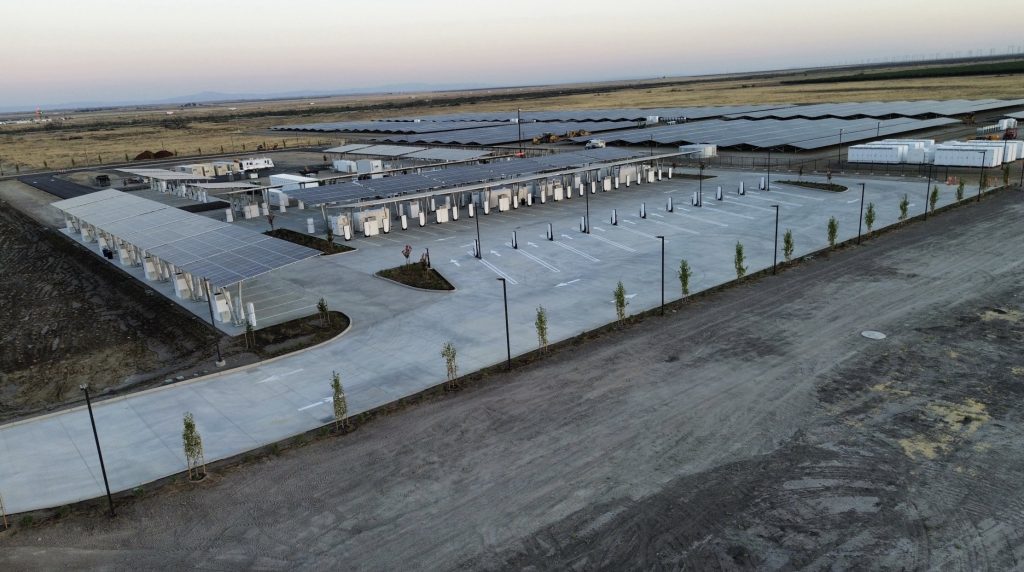
Credit: Tesla Charging | X
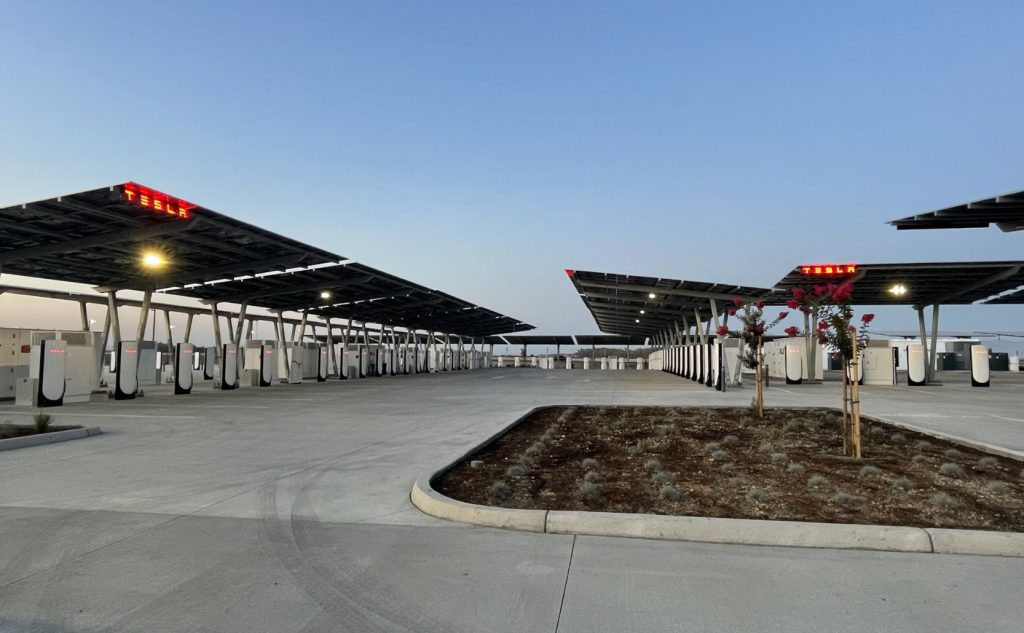
Credit: Tesla Charging | X
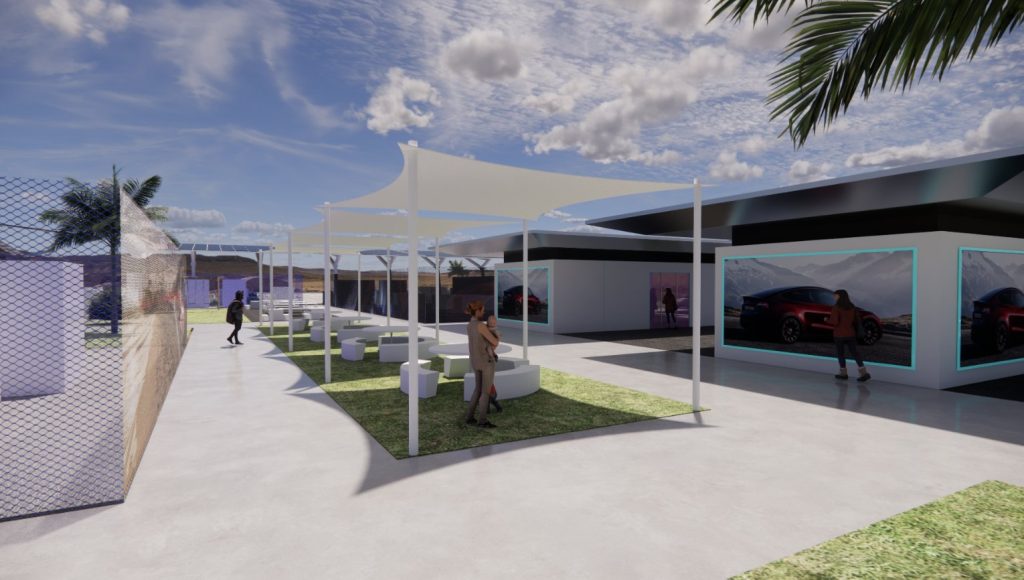
Credit: Tesla Charging | X
Tesla Supercharger Maps for North America, Europe, and Asia pic.twitter.com/0U5r0XRPyo
— TESLARATI (@Teslarati) July 2, 2025
READ MORE ON TESLA SUPERCHARGERS: Tesla launches ultra-fast V4 Superchargers in China for the first time
Testing at the LA Diner, plus Musk update on potential Tesla solar Gigafactory
The huge Tesla Supercharger station completed phase one of construction fairly quickly, especially given how long Tesla has been working on its unique Los Angeles diner, drive-in, and Supercharger location. Still, the company was seen performing some testing at the nearly-completed charging station earlier this month, and will reportedly be holding a job fair.
Elon Musk also responded on Monday morning to a post on X, suggesting that Tesla is “thinking about” building a U.S.-based solar Gigafactory in order to help support increased power needs with AI growth, and to bolster domestic solar production.
Tesla is building a new UFO-inspired Supercharger in the heart of Alien country
News
Tesla driver walks away from major accident with minor injuries
The driver sustained only minor injuries, and the exact cause of the crash remains under investigation.
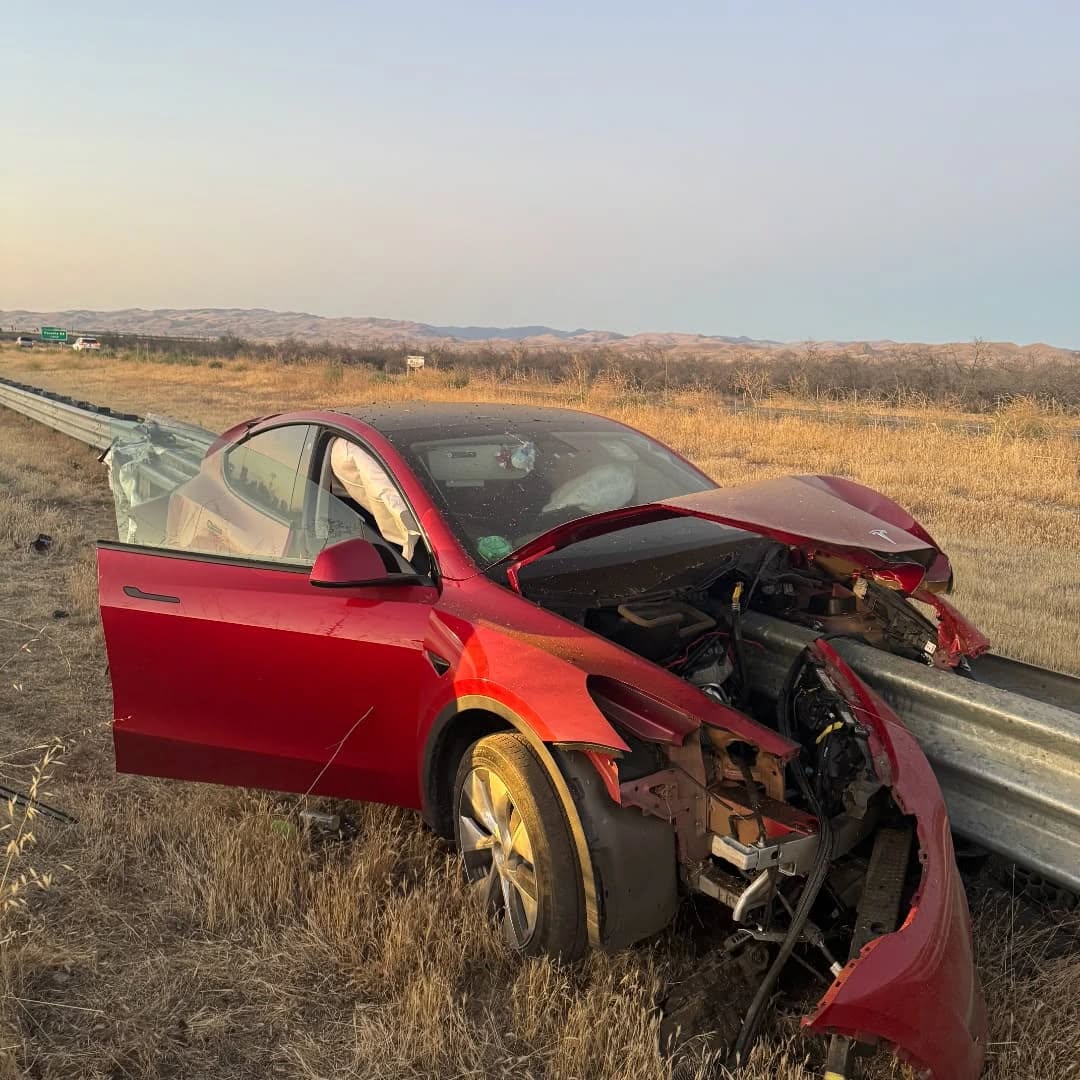
The driver of a Tesla Model Y survived and walked away from a harrowing accident on Monday in California, only sustaining minor injuries despite the vehicle being impaled by a guardrail.
On Monday morning around 4:34 a.m., the Los Banos division of the California Highway Patrol (CHP) responded to the accident on I-5 near Panoche Road, involving a 23-year-old in a Tesla Model Y. According to a post on social media, the driver veered off the road for unknown reasons in the northbound lane, before crashing directly into the guardrail and impaling the vehicle.
You can read the full message and photos from Los Banos CHP below, as were shared in a Facebook post on Monday afternoon.
This morning a Tesla model y was traveling in the #1 northbound lane of I-5 north of Panoche Rd. For unknown reasons driver allowed V-1 to veer off the roadway, travel through a dirt center divide, and crashed into the fixed metal guardrail. Lucky for the driver he only sustained minor injuries and was able to walk away. Driving a vehicle requires 100% attention to the road. Avoid distractions and focus on driving.
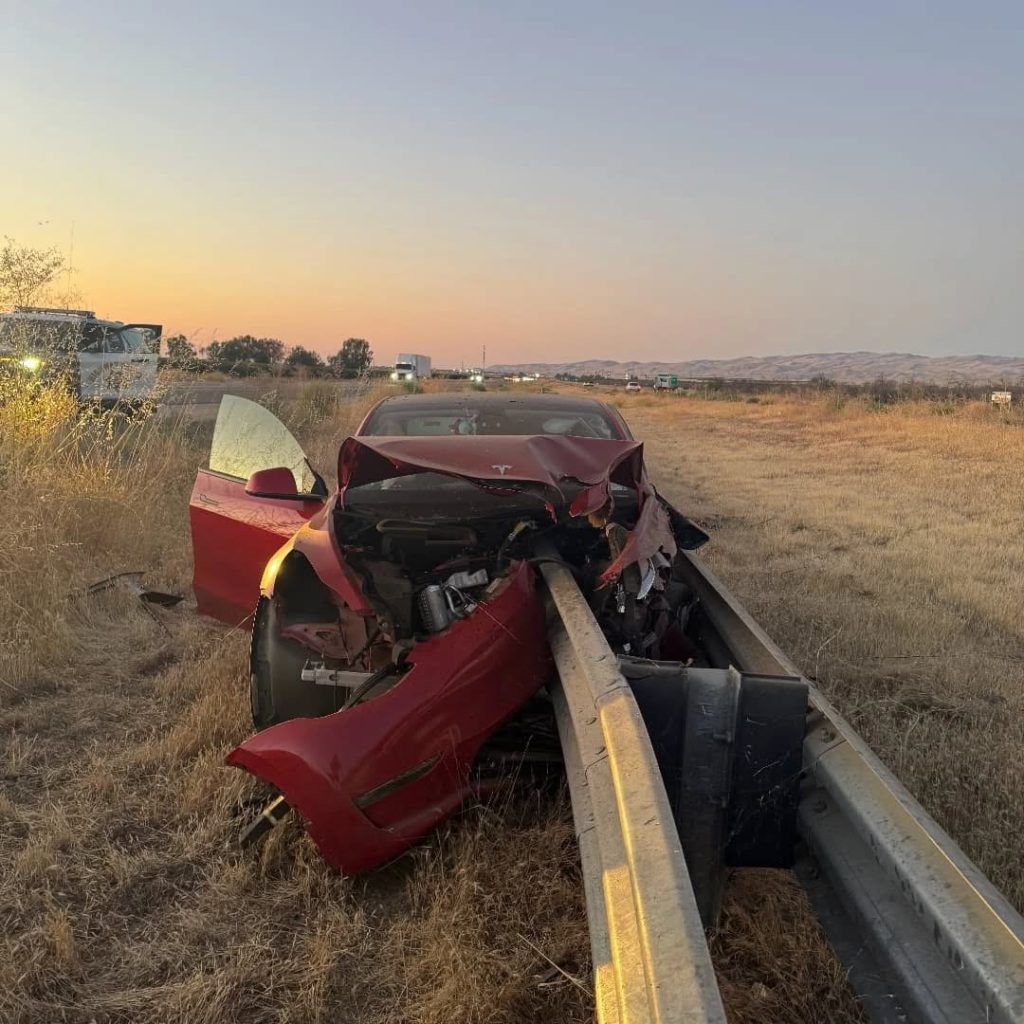
Credit: CHP Los Banos (via Facebook)
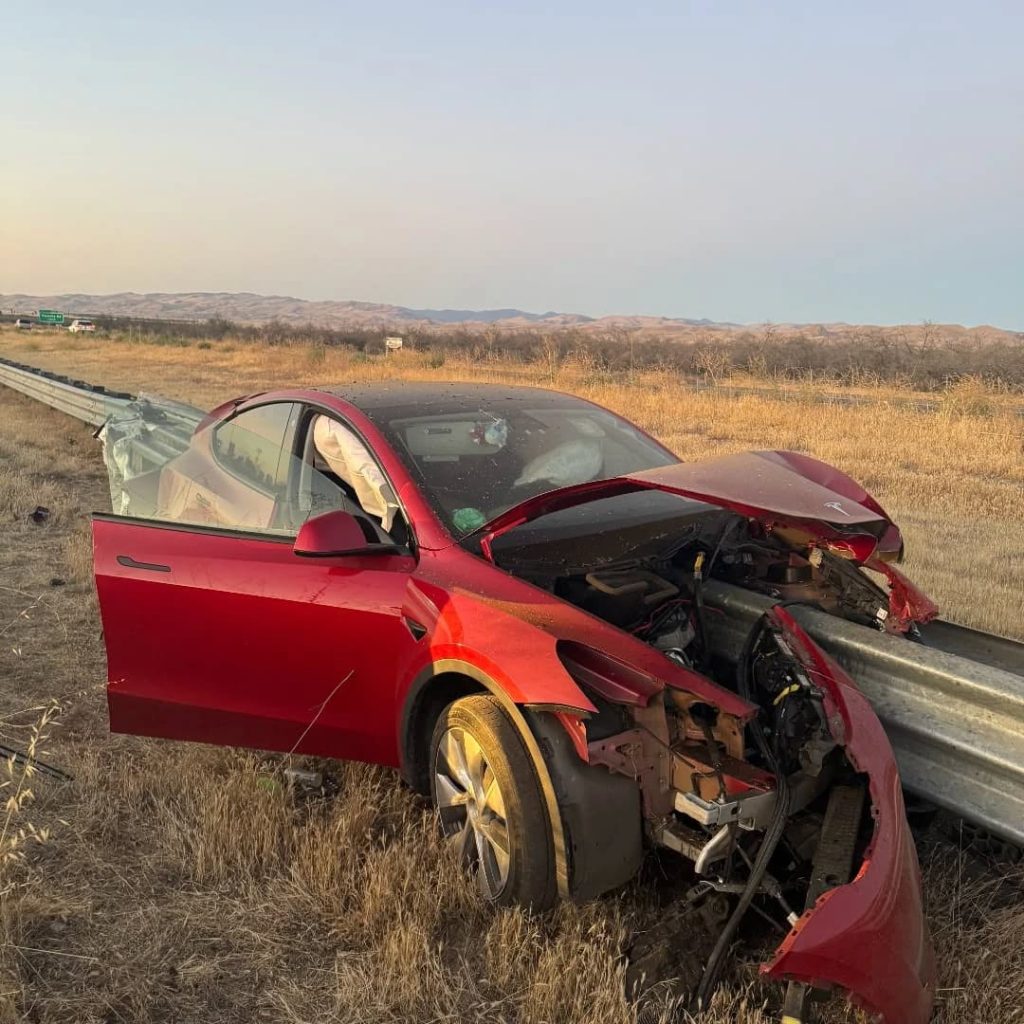
Credit: CHP Los Banos (via Facebook)
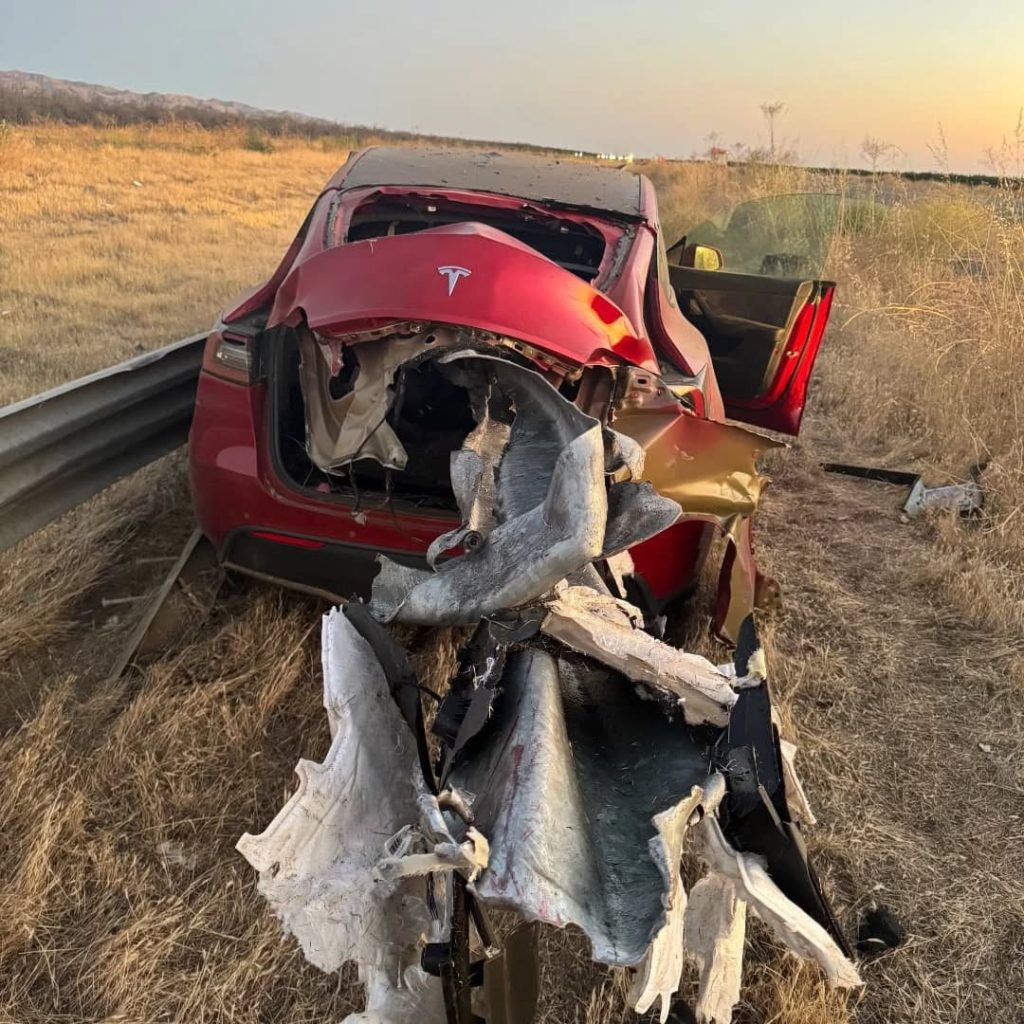
Credit: CHP Los Banos (via Facebook)
In a statement to SFGate, CHP officer Myles Anderson said that the driver only sustained minor injuries, while no arrests are made and drugs and alcohol are not suspected to have been involved. The report also notes that Tesla’s “cruise control and lane assistance features” were activated, according to Anderson. However, it’s not entirely clear if this is referring to Supervised Full Self-Driving (FSD), or to the cruise control and lane assist features baked into Autopilot.
At the time of writing, CHP has not yet responded to Teslarati’s request for clarification and additional details on the matter.
Tesla Crash Safety Ratings across its lineup: pic.twitter.com/ny30R7ceji
— TESLARATI (@Teslarati) July 1, 2025
READ MORE ON TESLA SAFETY: Tesla rolls out crucial new safety feature aimed at saving children
The news comes after Tesla has touted its vehicles as incredibly safe for many years. In December, for example, the company highlighted receiving top safety scores from regulators on four different continents throughout the world, including from the National Highway Traffic Safety Administration (NHTSA) and the Insurance Institute of Highway Safety (IIHS) in the U.S.
Tesla has also listed the goal of making its vehicles the safest on the road throughout the years, both in the overall design of its vehicles and in its Autopilot and Full Self-Driving (FSD) programs.
Tesla Model 3 ranks as the safest new car in Europe for 2025, per Euro NCAP tests
-

 Elon Musk1 week ago
Elon Musk1 week agoTesla investors will be shocked by Jim Cramer’s latest assessment
-

 News2 weeks ago
News2 weeks agoTesla Robotaxi’s biggest challenge seems to be this one thing
-

 News2 weeks ago
News2 weeks agoWatch the first true Tesla Robotaxi intervention by safety monitor
-

 Elon Musk2 weeks ago
Elon Musk2 weeks agoA Tesla just delivered itself to a customer autonomously, Elon Musk confirms
-

 News2 weeks ago
News2 weeks agoTesla Robotaxi rollout proves that Elon Musk still delivers, even if it’s late
-

 Elon Musk2 weeks ago
Elon Musk2 weeks agoxAI welcomes Memphis pollution results, environmental groups push back
-
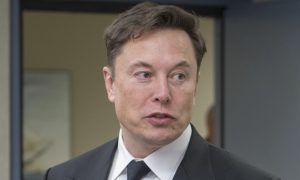
 Elon Musk2 weeks ago
Elon Musk2 weeks agoElon Musk commends Tesla team on successful Robotaxi launch
-

 Elon Musk2 weeks ago
Elon Musk2 weeks agoElon Musk confirms Tesla Optimus V3 already uses Grok voice AI


















